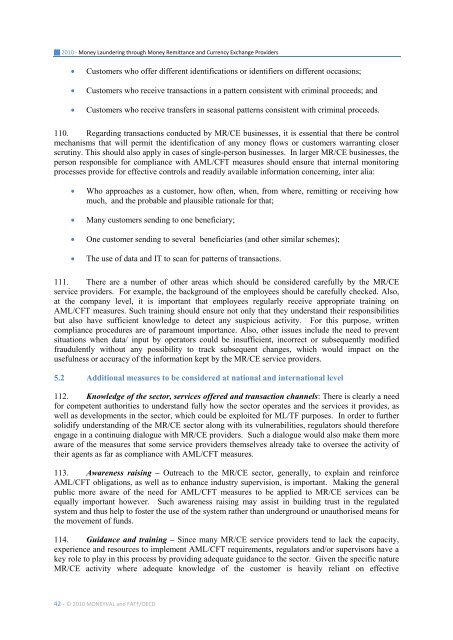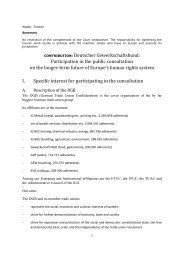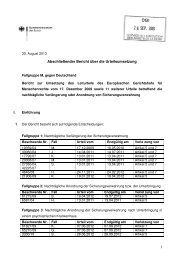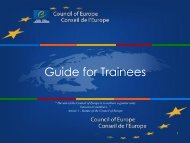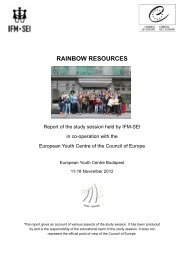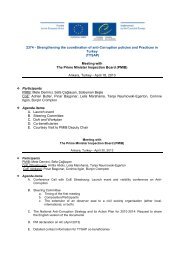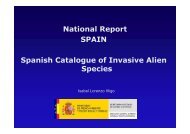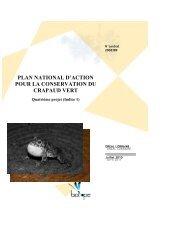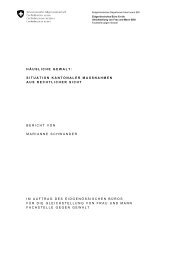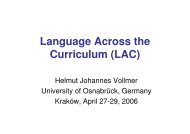Money laundering through money remittance ... - Council of Europe
Money laundering through money remittance ... - Council of Europe
Money laundering through money remittance ... - Council of Europe
You also want an ePaper? Increase the reach of your titles
YUMPU automatically turns print PDFs into web optimized ePapers that Google loves.
2010 - <strong>Money</strong> Laundering <strong>through</strong> <strong>Money</strong> Remittance and Currency Exchange Providers<br />
Customers who <strong>of</strong>fer different identifications or identifiers on different occasions;<br />
Customers who receive transactions in a pattern consistent with criminal proceeds; and<br />
Customers who receive transfers in seasonal patterns consistent with criminal proceeds.<br />
110. Regarding transactions conducted by MR/CE businesses, it is essential that there be control<br />
mechanisms that will permit the identification <strong>of</strong> any <strong>money</strong> flows or customers warranting closer<br />
scrutiny. This should also apply in cases <strong>of</strong> single-person businesses. In larger MR/CE businesses, the<br />
person responsible for compliance with AML/CFT measures should ensure that internal monitoring<br />
processes provide for effective controls and readily available information concerning, inter alia:<br />
Who approaches as a customer, how <strong>of</strong>ten, when, from where, remitting or receiving how<br />
much, and the probable and plausible rationale for that;<br />
Many customers sending to one beneficiary;<br />
One customer sending to several beneficiaries (and other similar schemes);<br />
The use <strong>of</strong> data and IT to scan for patterns <strong>of</strong> transactions.<br />
111. There are a number <strong>of</strong> other areas which should be considered carefully by the MR/CE<br />
service providers. For example, the background <strong>of</strong> the employees should be carefully checked. Also,<br />
at the company level, it is important that employees regularly receive appropriate training on<br />
AML/CFT measures. Such training should ensure not only that they understand their responsibilities<br />
but also have sufficient knowledge to detect any suspicious activity. For this purpose, written<br />
compliance procedures are <strong>of</strong> paramount importance. Also, other issues include the need to prevent<br />
situations when data/ input by operators could be insufficient, incorrect or subsequently modified<br />
fraudulently without any possibility to track subsequent changes, which would impact on the<br />
usefulness or accuracy <strong>of</strong> the information kept by the MR/CE service providers.<br />
5.2 Additional measures to be considered at national and international level<br />
112. Knowledge <strong>of</strong> the sector, services <strong>of</strong>fered and transaction channels: There is clearly a need<br />
for competent authorities to understand fully how the sector operates and the services it provides, as<br />
well as developments in the sector, which could be exploited for ML/TF purposes. In order to further<br />
solidify understanding <strong>of</strong> the MR/CE sector along with its vulnerabilities, regulators should therefore<br />
engage in a continuing dialogue with MR/CE providers. Such a dialogue would also make them more<br />
aware <strong>of</strong> the measures that some service providers themselves already take to oversee the activity <strong>of</strong><br />
their agents as far as compliance with AML/CFT measures.<br />
113. Awareness raising – Outreach to the MR/CE sector, generally, to explain and reinforce<br />
AML/CFT obligations, as well as to enhance industry supervision, is important. Making the general<br />
public more aware <strong>of</strong> the need for AML/CFT measures to be applied to MR/CE services can be<br />
equally important however. Such awareness raising may assist in building trust in the regulated<br />
system and thus help to foster the use <strong>of</strong> the system rather than underground or unauthorised means for<br />
the movement <strong>of</strong> funds.<br />
114. Guidance and training – Since many MR/CE service providers tend to lack the capacity,<br />
experience and resources to implement AML/CFT requirements, regulators and/or supervisors have a<br />
key role to play in this process by providing adequate guidance to the sector. Given the specific nature<br />
MR/CE activity where adequate knowledge <strong>of</strong> the customer is heavily reliant on effective<br />
42 - © 2010 MONEYVAL and FATF/OECD


